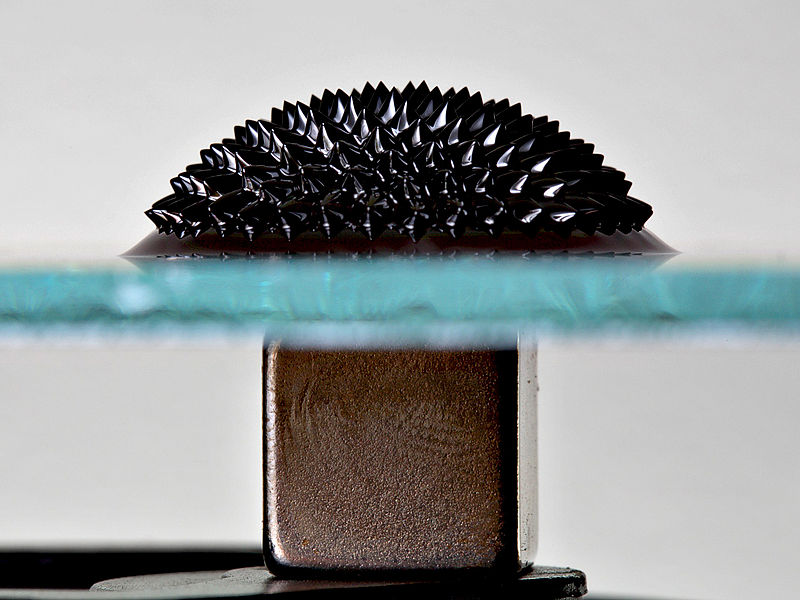
The purpose of this demonstration was to allow students to gain a deeper understanding of the rather familiar phenomenon of magnetism. Principles of magnetism and magnetic fields were demonstrated primarily through Ferrofluid, following a discussion of the nature of permanent magnets and dipole fields.
The shocking beauty of the Ferrofluid when exposed to a magnetic field allows for a striking (and hopefully memorable) visual demonstration of the untangible and invisible magnetic field caused by a magnet. The unexpected and beautiful effects lead a discussion of deeper physics principles that go beyond what is learned in Physics 11 and 12, driven by the curiousity and interest of the students in the demonstration.
The lesson part of the demonstration covers dipole fields, multiple parallel and anti parallel dipoles, paramagnetism and ferromagnetism. A key message is that systems tend toward the lowest energy principle, and the lesson seeks to fill in some obvious holes that many high school students likely have over the nature of permanent magnets. The discussion skips the underlying calculus and remains mostly qualatitive, and the intent is that the students gain some intuition for the phyiscs principles at play.
The core part of the demonstration revolves around a dish of ferrofluid presented in front of the class, which interacts with the fields of strong permanent magnets and also a solenoid. The students are asked to predict the outcome of each experiment, and what they observe. To supplement this, other smaller demonstrations are incorporated into the phyiscs concept discussion. Overall, this should make for an exciting and engaging presentation.
Lesson Plan: This is an example plan for a lesson on magnetism built around the actual demonstration, and describe the final demonstration procedure done for the students. I used these notes myself as reference while presenting, so I have included them here in document form for easy printing:
Lesson plan [.pdf]Worksheets: These worksheets are for the students to follow along with the lesson. The front side has space to answer questions I ask in class (see lesson plan), while the reverse is for predictions and observations during the demonstration:
Worksheet [.pdf]These are the slides that were used during the demo, these help especially with visualizing the fields involved:
Discussion Slides [.pptx] James Ward - 28890144.
PHYS 420 2019/2020